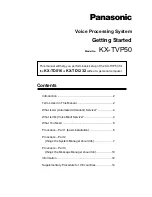
4
FAQ
FAQ
If
the
pack
is
plugged
in
for
charging,
is
the
walkie/pallet
jack
operational?
Yes
the
walkie
is
operational;
unplugging
the
main
Anderson
power
connector
is
recommended.
At
what
temperatures
can
I
charge
a
Flux
LiFT
Pack?
Flux
LiFT
Packs
should
only
be
charged
between
32
˚
F
‐
140
˚
F.
Is
it
OK
to
leave
the
LiFT
Pack
plugged
in?
Yes,
the
Battery
Management
System
(BMS)
monitors
charging
so
the
battery
will
never
overcharge.
Flux
actually
recommends
leaving
the
charger
plugged
in
at
all
times
when
the
battery
is
not
in
use.
Can
you
over
charge
or
over
discharge
the
packs?
Flux
Power’s
patented
Battery
Management
System
(BMS)
monitors
charging
so
that
the
pack
cannot
be
over
charged
or
discharged.
The
only
possible
risk
is
if
someone
fully
discharges
the
battery
pack
and
then
does
not
plug
it
in.
In
this
case,
because
of
the
small
parasitic
draw
from
the
electronics,
it
is
possible
to
completely
kill
the
pack.
This
is
why
we
recommend
the
packs
remain
plugged
in
whenever
not
in
use
for
more
than
a
few
days.
There
is
no
harm
in
leaving
the
packs
plugged
in,
but
great
harm
if
they
are
left
discharged
for
extended
periods
of
time.
What
type
of
charger
and
charging
profile
is
used
in
the
LiFT
Pack?
The
onboard
charger
is
a
high
frequency
BMS
controlled
device.
It
will
charge
at
constant
current
until
the
pack
voltage
reaches
28.55V
and
then
use
a
float
voltage
of
28.55V
to
finish
charging
and
balancing.
Can
a
lead
‐
acid
charger
be
used
to
charge
the
Flux
battery?
Flux
LiFT
Packs
require
a
higher
charging
voltage
than
lead
‐
acid
and
come
with
an
onboard
charger.
However
in
some
instances
a
lead
‐
acid
charger
can
be
used
to
partially
charge
the
LiFT
Pack
–
but
for
optimal
performance,
always
use
the
onboard
charger.
Is
the
charger
CEC
(California
Energy
Commission)
approved/rated?
Internal
chargers
are
exempt
from
needing
CEC
approval
(mobile
platform)
and
the
external
charger
is
exempt
until
Feb.
1
st
2017.
How
much
current
does
the
LiFT
Pack
onboard
charger
draw?
It
is
a
775W
charger,
so
the
current
draw
is
dependent
on
the
supplied
voltage.
If
the
socket
supplies
130V,
the
charger
will
draw
5.9A.
If
the
wall
socket
supplies
110V,
the
charger
will
draw
approximately
7A.
Standard
US
electrical
outlets
supply
a
range
of
voltages
depending
on
the
distance
from
the
transformer.
What
type
of
cord
is
used
for
charging?
A
regular
120VAC
extension
cord
is
used
for
charging.
The
LiFT
Pack
ships
with
a
10ft
cord.
The
charger
requires
105
‐
130V
to
function
properly,
so
use
a
wire
sizing
guide
if
you
wish
to
use
a
longer
extension
cord.


























